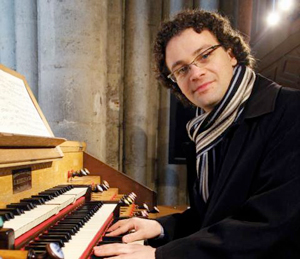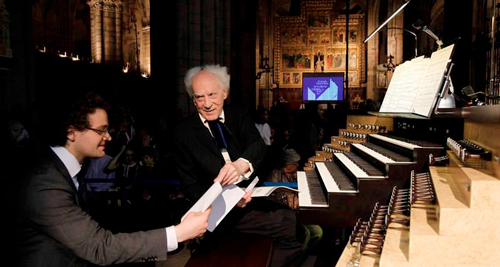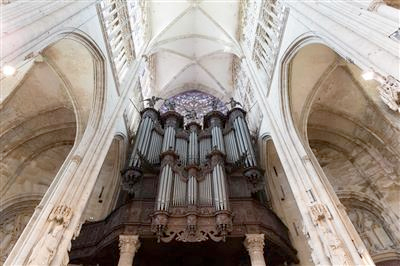by Daniel Hathaway

Monnot will play a program titled “Russian Fireworks,” entirely devoted to transcriptions, including Jean Gillou’s adaptations for the organ of Sergei Prokofiev’s Toccata, Op. 11, Pyotr Tchaikovsky’s Scherzo from Symphony No. 6, and Modest Mussorgsky’s Pictures at an Exhibition, as well as Monnot’s own reworkings of Alexander Scriabin’s Etude No. 1, Op. 2 and Prélude No. 2, Op. 11.
After earning first prizes and a master’s degree at the Paris Conservatory, where he studied with Olivier Latry and Michel Bouvard, Monnot served for ten years as assistant to Jean Guillou at the Church of St-Eustache in Paris. Because of his travel schedule, the organist wasn’t available for an interview, but he graciously agreed to answer some questions by email.
Daniel Hathaway: You were assistant to Jean Guillou, who is a very interesting and controversial figure. What did you learn from him, and what was one of your most interesting experiences?
Jean-Baptiste Monnot: Jean Guillou is a man driven by an inexorable creative force. His teaching invites us to put new insights into the works we play. This enables new aspects of the music to be revealed every time, partly by using all the different coloristic resources of the organ.
An experience that had great significance for me was the premiere of the music for the play Macbeth by Shakespeare that Jean Guillou composed for Japanese Noh Theater. This gave me the opportunity to work closely with him and better understand his approach to the piece in preparation for the Kyoto and Nagoya performances.
DH: Did Guillou’s approach to transcriptions influence your own arrangements for the organ?
J-BM: I don’t know whether I have been influenced by Jean Guillou’s transcriptions. I have searched for musical textures on the organ that preserve all the dramatic and lyrical intensity of Scriabin’s music.
DH: What are your regular responsibilities as titulaire of St-Ouen?
J-BM: My mission as the titular organist at St-Ouen is to look after two essential elements: the preservation of the instrument and the musical life around it. Needless to say, this organ requires special attention to preserve its historical integrity. I’m now working to build national and international links for the purpose of sharing with other musicians the musical experience this instrument can offer.
DH: You have proposed a very interesting program for the Cleveland Museum of Art. How did you decide to choose transcriptions of Russian piano and orchestral works?
J-BM: Since an early age I have been interested in Russian music, Alexander Scriabin in particular. It’s important, however, to be aware that not every work can be transcribed for another instrument. The organ can certainly be used as an orchestra, and the textural richness of both the piano and orchestral Russian works is particularly inviting for organ transcriptions in a “symphonic” sense. It’s interesting that none of the Russian composers I’m playing wrote for the organ. Therefore, it’s a great opportunity to bring the Russian compositional language to the organ world.
DH: In Rouen, you play one of Aristide Cavaillé-Coll’s late masterpieces with an abundance of 16- and 8-foot registers. How will you have to change your approach to registration for a neo-Baroque instrument like the Holtkamp at the Cleveland Museum?
J-BM: The uniqueness of each instrument is what makes the organ so fascinating. This diversity has always appealed to me as a musician, because it invites you to rethink the sound texture and your interpretive vision on that particular instrument. It’s intensive listening that enables us to employ the instrument at the service of the music.
Published on ClevelandClassical.com November 8, 2016.
Click here for a printable copy of this article



